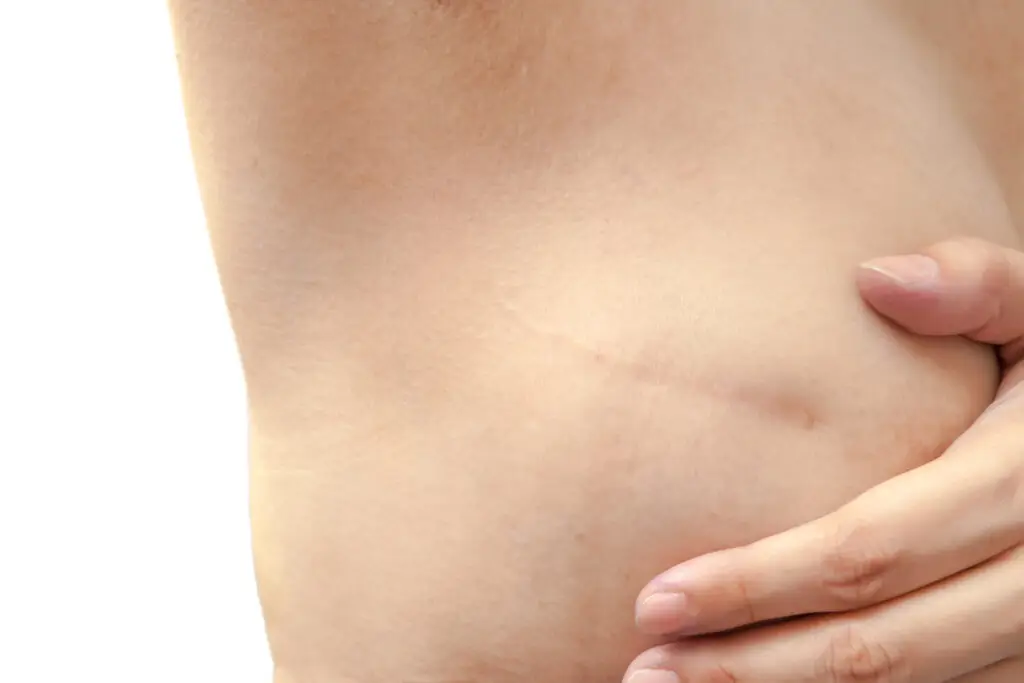For breast cancer patients, a mastectomy is a surgical procedure that removes all of the breast tissue. The location of the cancer in the breast, the shape of the breast, and the position of the nipple can influence whether the nipple can be preserved at the time of mastectomy.
The 3 Different Types of Breast Cancer Mastectomies
Skin-sparing Mastectomy
The breast tissue is removed along with the nipple. This option is often chosen if the breast cancer is too close to the nipple. It may also be recommended for women with a low nipple position or with sagging breasts.
Nipple-sparing Mastectomy
The breast skin is preserved along with the nipple. This breast cancer mastectomy technique suits patients when the tumor is a safe distance away from the nipple. Ideally the nipple is already in a good position on the breast, requiring minimal repositioning. Even though the nipple is saved, it will no longer have normal sensation.
Risk-reducing (prophylactic) Mastectomy
This surgery will reduce the risk of breast cancer in patients with a genetic mutation (such as BRCA), or in patients with a significant family history of breast cancer. These patients are often ideal candidates for a nipple-sparing mastectomy. Patients undergoing mastectomy may choose to have risk-reducing mastectomy on the healthy breast.
Your plastic surgeon will coordinate with your breast surgeon to help you determine which type of breast cancer procedure is right for you. To learn more about breast reconstruction options, visit our blog post here
This information was made possible by support from New York Breast Reconstruction and Aesthetic Plastic Surgery. For more information visit NYBRA – Mastectomy . To learn more about breast reconstruction download the Outcomes4Me app and visit the breast reconstruction resource section.
Personalized support for real care decisions
Understand your diagnosis, explore clinical trials, and track symptoms--all in one place.
Get started
Compare treatments, prepare for appointments, and track side effects—all in the app
Built for your diagnosis, Outcomes4Me gives you the tools to make confident, informed decisions—right when you need them.
Continue in app






